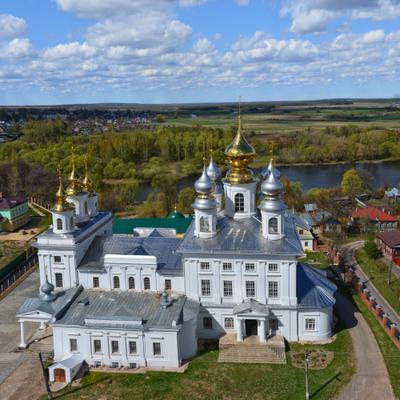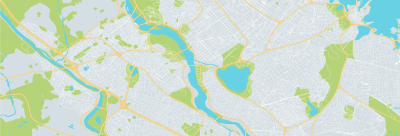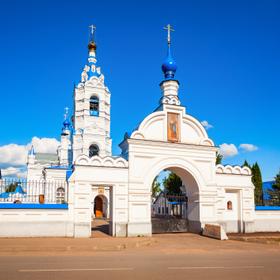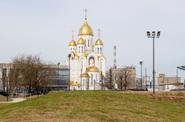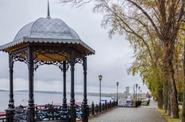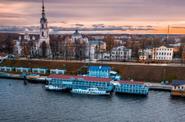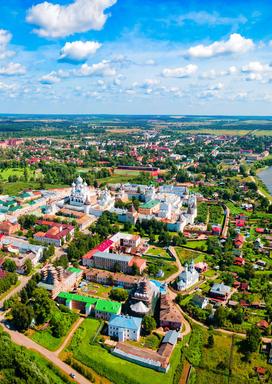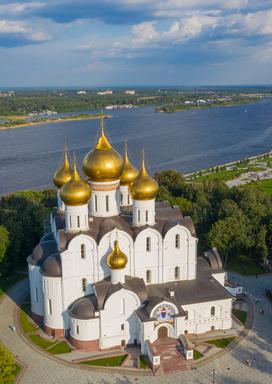The recommended train from Moscow is No. 740, departing at 07:07 from Kursky railway station, arriving in Ivanovo at 10:48.
10:48 Meeting with the guide at the railway station at the loom.
Boarding the bus (there is free seating on the bus).
Sightseeing bus tour of the city of Ivanovo.
This is a city of unique metaphor houses, the most revolutionary history, the birthplace of the "main" Russian fashion designer Slava Zaitsev and the father of Russian chanson Arkady Severny, the youngest and most colorful city of the Golden Ring of Russia!
Russian Russian City of Brides, Calico Paradise, The Heart of Russian Textiles, even Russian Manchester — all these are the folk names of Ivanovo!
And it is also the third most important center of the 1917 revolution after St. Petersburg and Moscow. It is not for nothing that many bold and provocative monuments of Soviet urban architecture are concentrated here.
We will see a Ship House, a Bird House and a Bullet House, a two-colored church, the deceptively ancient Vvedensky Monastery, the famous Shchudrov tent of the XVII century, as well as the most unusual and even daring monument to Arkady Severny.
The architectural diversity of Ivanovo streets covers almost all styles — from Baroque to modern.
Lunch at the restaurant.
Visit to the D. G. Burylin State Museum of Local Lore, one of the best collection museums in Russia.
In its collection, with exceptional completeness and in the best samples, unique collections of "rarities and antiquities" are presented, collected by its founder Dmitry Gennadievich Burylin, a famous Ivanovo-Voznesensky patron, collector, educator.
The Museum of Industry and Art, which has a century-old history, has in its collections more than 780 thousand museum objects from antiquity to the present.
These are antiques, porcelain, paintings, numismatics, weapons, books, decorative and applied arts and much more. The museum is rightfully considered one of the best museums in provincial Russia.
Transfer to Kineshma, which is located on the banks of the Volga River.
The first mention of the city dates back to the XV century. However, in the following centuries, Kineshma was, although large and rich, but a rural settlement (sloboda).
Kineshma received its urban status only in 1777 as part of Catherine's urban reforms.
In addition to the Volga trade, the city also developed its own textile production.
Accommodation at the hotel .
Supper.


